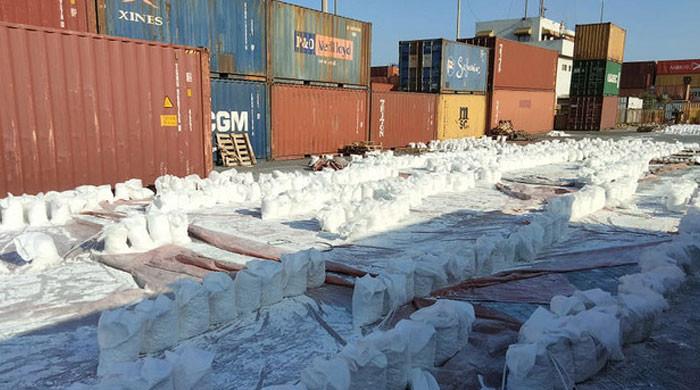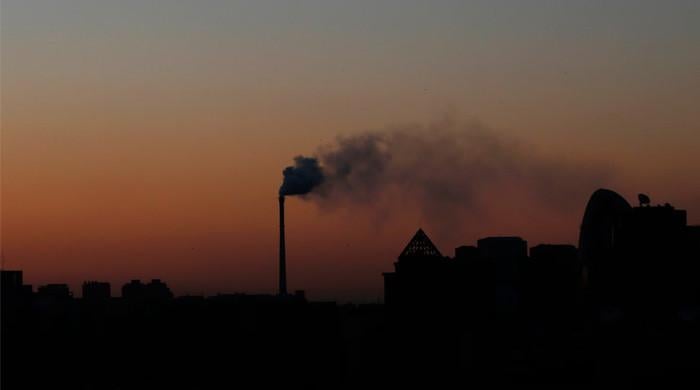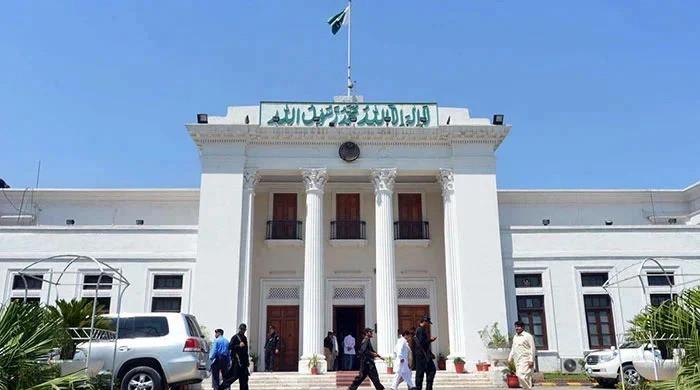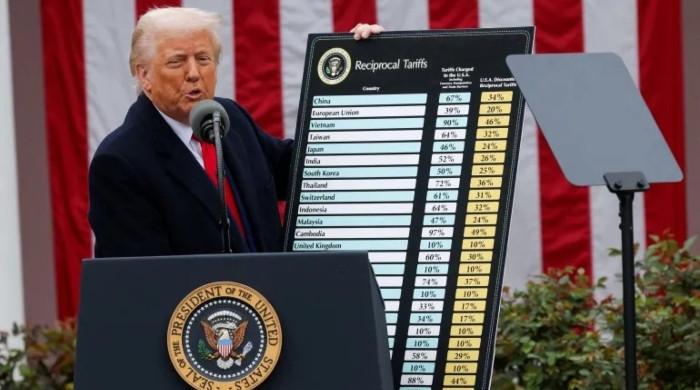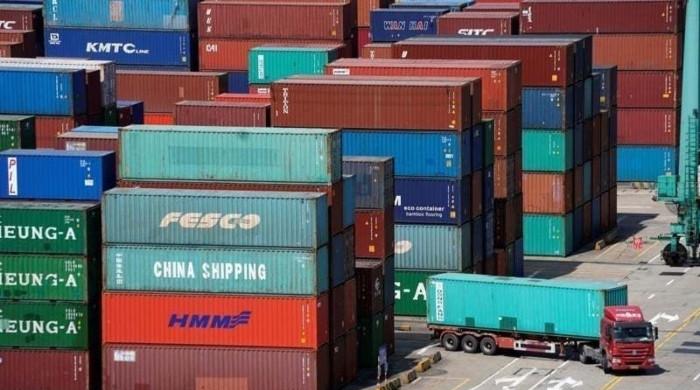Pakistan’s debt burden and the flawed debate
The total debt and liabilities stock of Pakistan as of June 2022 consists of 60% domestic and 40% external debt
August 05, 2022

Pakistani media commentators and the society at large seem to be in a state of shock. The sharp and abrupt plummeting of the rupee against the US dollar, the 24 per cent inflation rate, the depletion of foreign exchange reserves, an unanticipated large current account deficit, continuous spikes in policy rates with their attendant impact on bank lending rates, the slowdown in approval of import remittances, and the erosion in market capitalization of listed companies have combined and created a situation of panic.
Jittery sentiments and uncertainty about the future course of action have brought in speculators in the foreign currency market, pushing up demand for the dollar beyond its real market determined value.
Exporters are hesitant to convert their earnings in the hope of even better rates. The decline in July exports testifies to this trend. Importers are keen to pad up their normal demand for dollars to avert further losses arising from future depreciation.
Both the supply and demand mechanisms of a normal functioning market are distorted. From July 2018 to March 2022, the rupee depreciated cumulatively by 35%, while in the last 3 and a half months the fall was 40 per cent — a highly exceptional movement.
The purpose of this article is to explore whether these extraordinary movements are a result of solvency crisis (i.e default), liquidity crisis, or simply a result of panic created by unwarranted fear and misperceptions.
In regard to the solvency, the IMF’s latest debt sustainability analysis in their February 2022 article 4 consultation report shows that public debt levels are likely to continue to be on a downward path provided Pakistan follows the adjustment path agreed in the context of the Extended Fund Facility.
Economic fundamentals with regard to foreign exchange earnings show a 27 per cent increase in exports of goods and services and a 6 per cent increase in inward remittances. The total foreign exchange earnings amounted to $75 billion in the fiscal year ending June 2022, compared to $67 billion dollars in the previous year — a positive variance of 12 per cent. Foreign exchange earnings represent the capacity of the country to service its external debt and liabilities.
Pakistan was able to repay principal and interest amounting to $16 billion despite the large external shock of the commodity super cycle that doubled and tripled the prices of fuel and food. Policy actions have been taken to stay on the adjustment path. Subsidies on petroleum products have been withdrawn.
POL products have been levied a Petroleum Development Levy. Power tariffs have been raised with rebasing, monthly and quarterly adjustments.
The Federal Budget has been revised with additional taxes worth 2.5 per cent of GDP, provinces transferring Rs700 billion as cash surplus, and as a result, the primary budget would have a surplus of 0.4 per cent of GDP. Policy rates have seen a continuous upward movement in light of inflationary pressures. The exchange rate is determined by the market and not fixed by the SBP.
The way the debt burden is portrayed in popular discourse is highly flawed for several reasons. There is also a serious misunderstanding about the debt burden as figures of Rs47 trillion are advertised quite often. Indebtedness in absolute nominal rupee terms with horrific debt per person spin has been highly politicized.
Comparisons are made of the increase in total debt stock again recorded in the 2008-2013 period in absolute numbers with those in 2014-2018 and 2018-2022. This unfortunate tendency has caught on currency and has become part of our popular folklore. First, total debt stock and liabilities is a sum of domestic debt and external debt.
The translation of external debt stock in a rapidly depreciating exchange rate regime would push up the rupee denominated total debt number even if there is no additional borrowing of one dollar.
Every party in the opposition, along with their supporters in the media, would castigate the ruling party for raising the debt burden on the people of Pakistan through their irresponsible behavior, incompetence, and mismanagement. This blame game continues unabated with the changes in government.
Second, the risks of domestic debt are quite different from those of external debt. While both create debt servicing liabilities for the budgetary purposes and therefore affect the fiscal balances, the risk profiles of the two vary from each other.
Domestic debt has to be paid in rupees, which can be printed or the central bank can acquire those obligations on its balance sheet by creating reserve money. It does imply that possible inflationary pressures would be created, but there is no risk of default, which is a real threat in the case of foreign currency dominated debt.
Countries that have suffered debt crises have faced solvency and liquidity risks in servicing their foreign currency risk. The total debt and liability stock of Pakistan as of June 2022 consists of 60 per cent domestic and 40 per cent external debt. Therefore, the discussion on possible default should focus on the external debt and liabilities (EDL) and the capacity to service this debt on time.
Third, the composition of debt by creditor type is important. Pakistan’s total external debt and liabilities (US $130 billion as of March 2022) consist of public and public guaranteed (PPG) debt and liabilities of US$109 billion and private sector debt of $21 billion.
Public debt and liabilities of $102 billion are the responsibility of the government of Pakistan and service payments are made through the budget.
The publicly guaranteed debt of $7 billion consists of the borrowing contracted by the state-owned enterprises and serviced out of their revenues. Private sector debt is the obligation of private sector borrowers, but the SBP provides the foreign exchange cover for the payments. Thus, one has to distinguish between the implications for the balance of payment and the federal government’s budget.
Fourth, the solvency indicators assess the capacity to repay the long and medium-term loans, while the liquidity indicators are mainly concerned with the short term (less than 1 year) and the maturities falling during that year. In Pakistan’s case, the long and medium term loans account for 89 per cent of the total EDL public external debt.
Taking even a more cautious view by including swaps, central bank deposits, Naya Pakistan certificates, portfolio investments and maturities to be extinguished as part of short-term debt, the total amounts to $11.2 billion, with the ratio of short-term debt to total EDL around 11 per cent — not something worrisome.
The composition of long and medium-term public debt is also skewed in favour of official creditors—multilateral institutions including the IMF (37%) and bilateral governments (32%), i.e., two-thirds of the long-term debt.
Only one-third is in the form of bonds and Sukuks (9%), commercial banks (8%) and central bank deposits (7%). The loans from multilaterals are concessional or blended with maturities of 20–25 years, a 5 year grace period and a lower than market interest rate. International bonds accounted for half of Sri Lanka's debt.
We now turn to the liquidity crisis. Yes, there is a short-term liquidity squeeze as many of the bilaterals are also waiting for the IMF programme approval. The government has also obtained additional deferred oil payments and RLNG payment facilities from Saudi Arabia and Qatar, agreed to sell some of the shares in listed SOEs on a government-to-government basis.
It would also build up its reserve levels after repayments and financing of the current account deficit. Oil prices, and those of wheat and cotton, are coming down in the international markets. Import compression measures would also help.
Going forward, it is estimated that Pakistan’s external financing requirements for the year 2022–23 would be $34 billion. According to the State Bank of Pakistan, this amount has been locked in. The $16.4 billion would be disbursed by multi-literal institutions and through Saudi oil facilities. The $9 billion would be rolled over by the Chinese, Saudi Arabia, and UAE. The IMF would release $4 billion as the remaining tranches. FDI, portfolio investment flows are expected to bring $3.5 billion. Bonds and Naya Pakistan certificates would fill in the balance amount.
An examination of the vulnerability coefficients for the fiscal year 2022 reveals that both public and publicly guaranteed (PPG ) debt liabilities to foreign exchange earnings and PPG debt, and liabilities to exports of goods and services have improved relative to fiscal year 2021, but there has been a deterioration in PPG debt and liabilities to foreign exchange reserves for the reasons mentioned above.
The above analysis shows that political disruption since March 2022 and uncertainty have created a temporary liquidity crisis in foreign exchange markets, with abnormal movement of the rate downward. The panic created by this adverse movement had a spillover effect on the money and equity markets, international trade transactions, and real sectors of the economy.
On the international scene, the contagion effect of Sri Lanka and other emerging countries in debt distress, along with the appreciation of the US dollar, Fed rate hikes and reversal of capital flows from emerging markets to safe havens, supply chain disruption in China, have aggravated the situation.
The release of the IMF tranches is likely to trigger other disbursements by multilateral institutions and official bilateral creditors. This should ease liquidity constraints that the country is facing. We can conclude from the above analysis that we have to (a) keep the political temperature down and reduce uncertainty, (b) follow the adjustment path agreed with the creditors and (c) initiate some tough structural reforms in Energy, Tax, SOEs, agriculture productivity, export promotion, so we do not remain addicted to foreign savings for our survival.





